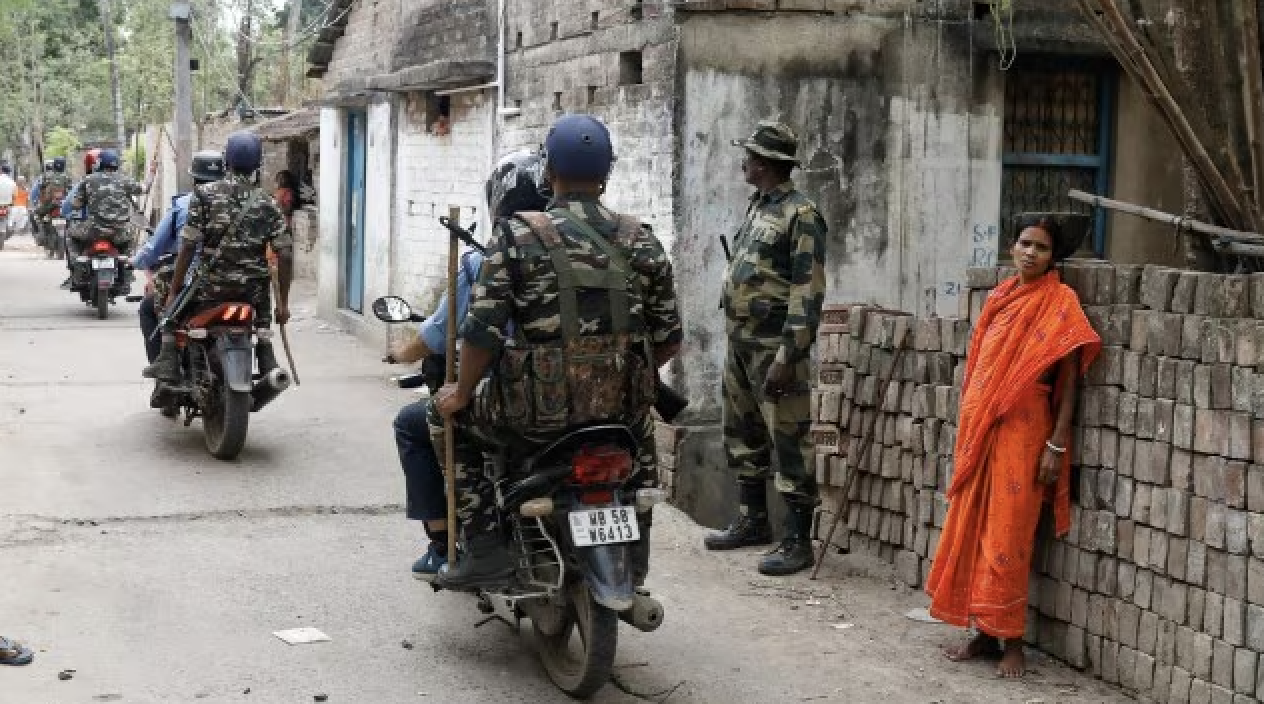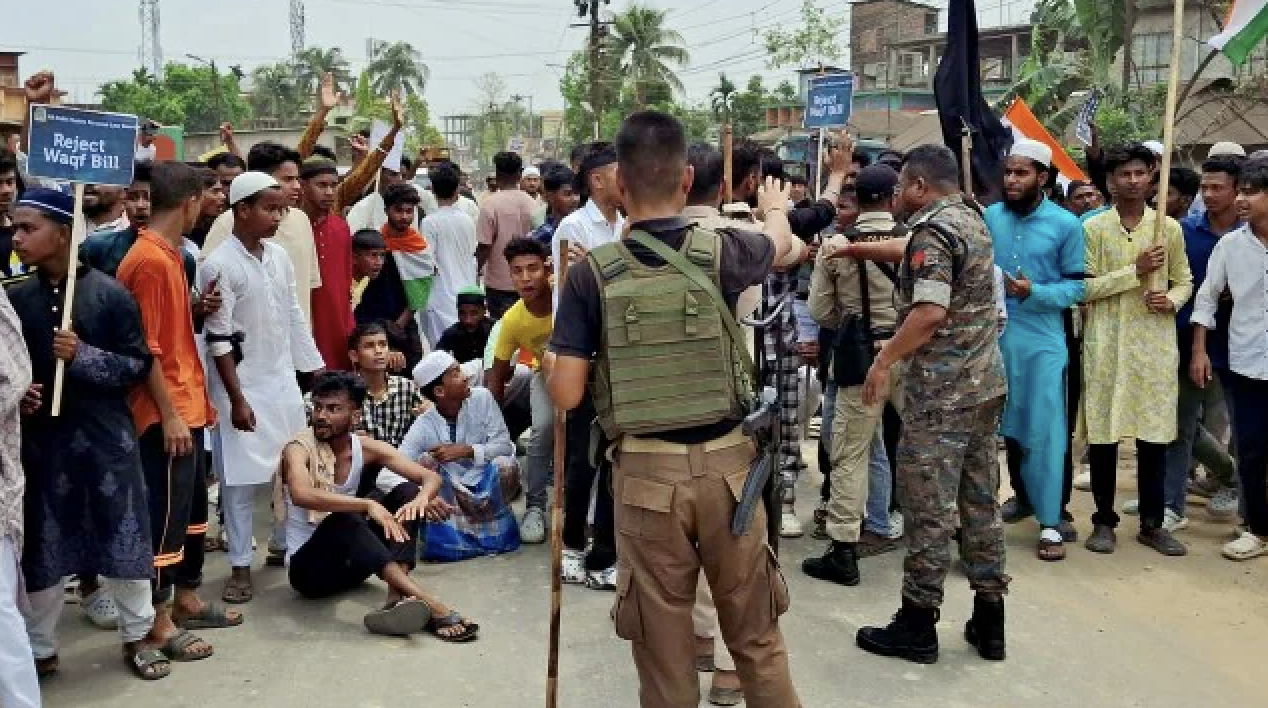
By
The rise of nationalism is going global. From the success of Brexit, the popularity of the far-right movements across Europe, and to Donald Trump winning the 2016 U.S. presidential election. In India, the nationalist government is led by Narendra Modi. This article highlights the strategies of the Bhartiya Janata Party (BJP) and its parent organization the Rashtriya Swayamsevak Sangh (RSS) to bring the ethnic communities in Assam and Manipur into the Hindu fold.
From 2014, India saw the mushrooming of right-wing constituencies. Modi, a Pracharak in the RSS was named as its Prime Ministerial Candidate. Later on, it defeated the Congress-led, United Progressive Alliance (UPA). The National Democratic Alliance (NDA) was formed, Modi took oath as the Prime Minister paving the way towards the rise of Hindu Nationalism across India.
His winning was the cocktail of hyperbolic nationalism, religious polarization among Hindus and Muslims, and several developmental programs. The campaign was divisive and promised a stronger India with a regional outlook that would bring development.
The RSS in Northeast India
Connected by a narrow stretch of land commonly referred to as the Chicken’s Neck or the Siliguri Corridor the entire states of Northeast India are truly diverse, rich in resources, and vegetation. For many years the region was neglected by the mainstream and was looked upon as a periphery that is dependent on centers. Today, Northeast India is on the path of development. Intending to connect India with the Association of Southeast Asian Nations (ASEAN) the region will play an important role in India’s Act-East Policy.
The RSS enters the region just 10 months before India’s Independence. Their first Shakhas were established in Guwahati, Shillong, and Dibrugarh by three Pracharaks- Dadarao Parmarth, Vasantrao Oak, and Krishna Paranjpe.
For the BJP with the strong support from the RSS, it is in full swing battle to win the hearts and souls of the indigenous people of the Northeast. The affiliates of the RSS in the region have been successfully propagating their ideas through various resources to further propagate the Hindu way of life. The electoral success in the states of Assam and Tripura can be credited to the RSS Pracharaks working tirelessly in the region.
Assam
Assam has around 35 million population out of this over a third are Muslim voters. The polity has been dominated by Ethno-nationalism cultural groups for years. This was seen as an opportunity by the BJP to assimilate the Hindu sense of nationalism. By fabricating the Muslims as the enemies within, the BJP constructed a sense of fear and resentment for the Assamese ethnic groups to unite for their status and power against Muslims. The electoral battles of such issues led towards the defeat of the Congress and the fusing of Hindu Nationalism and Assamese Nativism intensified.
With Himanta Biswa Sarma sworn in as the Chief Minister, there is swift in taking aggressive actions which are in parallel to the agendas of the RSS. After his swearing-in ceremony the next day he visited the office of the RSS in Guwahati and meet with the Karyakartas. The Assam Assembly also passed the Cow Protection Bill to regulate the slaughter, selling, consumption, and transportation of cattle. He also approached the Supreme Court for the verification of the Assam NRC (National Register of Citizens). The recent eviction drive which the government termed as the removal of illegal encroachments has deeply polarized the state.
Sarma is being referred to by many as the Yogi Adityanath sometimes Chanakya of the Northeast and the party’s most prominent and vocal leader who speaks and preaches the agendas of the RSS. With him in power, there is a steady Saffronization of Assamese culture by uniquely bringing all the ethnoreligious communities into the Hindutva belt.
Manipur
Compared to Assam, the state of Manipur is behind becoming a Hindu Nationalist State. Ethnonationalism is yet to take root, one reason is the deep psychological construct of the Hill-Valley divide among its peoples. Which has created a negative emotion of becoming oneness.
The reason behind BJP led government coming to power in assembly elections 2017 was not because of Hindutva Politics. It was the public’s desire for a new taste of politics previously entangled with complex ethnic divides. However, with the BJP and the RSS trying hard to take roots in the state it can also be seen as an expansion of Hindu Nationalism.
The RSS has been stationed in Manipur since the 1950s. They have been running Schools, Sakha’s, Milans, and Mondolis most of which are active around Imphal valley. However, they have little influence in the hills. With the advent of the NDA regime in the state, the RSS is expanding its roots slow but steadily. Since it came to power Manipur’s Chief Minister N Biren Singh and the RSS Pracharaks are on a serious mission to ignite the Vaishnavism followers of the Valley to come out in support of their attempts to take hold of their electoral positions.
The regime is also trying hard to ignite a sense of nationalism by linking Manipuri Nationalism with the patriotism of mainstream freedom fighters. This can be seen when the Union Home Minister Amit Shah announced the renaming of Mount Harriet in Andaman Nicobar Islands as Mount Manipur about the contribution made by the Manipuri’s against British Colonialism.
For the present, the RSS in Manipur sees temples boards and the education sector as a fertile ground to further Saffronize the state. On 24 October 2021, tensions erupt inside the Shree Govindajee Temple in Imphal when government authorities tried to construct a Hindu temple inside the premises. The matter could be seen as an attempt by the RSS to further take roots of their grounds by sidelining the indigenous communities. The ongoing developmental activities of the temple are the flagship project for the RSS and the Chief Minister himself to bring Manipur into the limelight of the Hindutva belt.
However, till now the RSS had little influence on the electoral politics of the state especially in the hills and has even underplayed taking roles in the 2017 state assembly elections. The assembly elections 2022 on the doorway and a large number of intending candidates running for the party’s ticket in almost all the constituencies. There will be a huge question on the loyal and disloyalty of the candidate towards the party and most importantly choosing its right candidate. The coming election could also witness poll violence in the constituencies where there is a large number of candidates seeking to contest on the party’s ticket once candidature is announced.
The most critical issue for the organization facing today in the state is its recruiting process. It is now facing a wave of unpatriotic aspirants who came to join the organization only for its political goals. It also faces the challenge from the Meitei communities whether they would accept the Hindutva Politics or not?
With the RSS idea of a ‘Hindu Rashtra’ not going well with the Meitei’s of the valley and the Christians residing in the hills. And the recent killings of the innocent civilians in Nagaland’s Mon district by the Assam Rifles. There is a growing demand for the withdrawal and repeal of the Arm Forces (Special Powers) Act (AFSPA) by the National People’s Party (NPP) which is a BJP’s prominent ally in the state’s government. This could create frictions in their allies as well as from the Naga People’s Front (NPF) a party that is active in Naga dominant districts.
Compared to the activities of the RSS in other BJP-ruled states. The strategies in Assam were unique. In the coming elections, the RSS might use the same strategies in Manipur of creating an environment of resentment which will ignite the Vaishnavite Meitei of an Ethno-nationalist movement to peddle with the Hindu Nationalism against the non-Hindus of the state. Which could lead to bloody classes among its ethnic communities and the disintegration of the small state into many fractions.
This story first appeared on moderndiplomacy.eu






